If you go to the Island of Taquile in Lake Titicaca, you will have spent three or four hours in a boat passing floating islands, traditional reed boats, small fishing craft, and convoys of water birds. You will arrive at the base of this 3-by-1-mile (4.8-by-1.6-km) chunk of rock and proceed to climb 576 rocky steps up steep paths, gasping because the altitude is between 12,000 and 13,000 feet (3,6567.6 and 3,962.4 m) above sea level.
You’ll marvel at the ancient agricultural terraces, admire the pristine blue waters of the highest lake in the world and the view of snow-capped peaks rising in distant Bolivia. If you’re a knitter, and even if you’re not, you’ll also marvel at the sight of men in handsome traditional dress strolling along the paths knitting fine, intricate caps as they go.
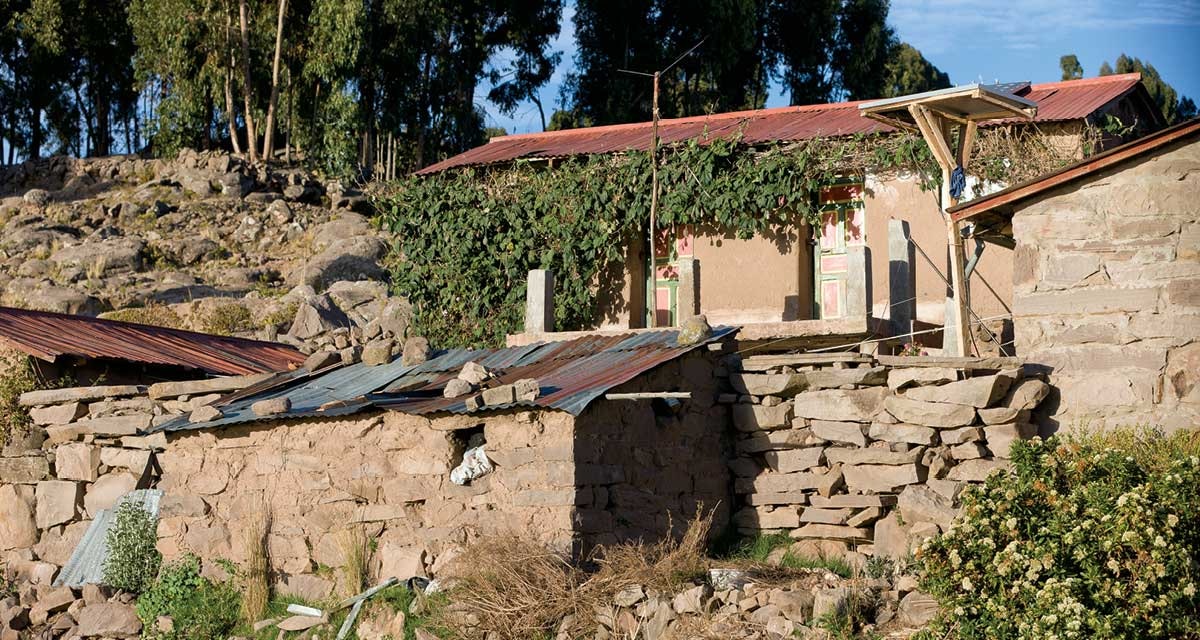
Faustino Quispe Cruz’s family home. Taquile Island, Peru. 2010.
While women spin and weave belts, bags, shawls, and blankets on pegged ground looms, men weave all the fabric for skirts, shirts, and vests on simple treadle looms, and they knit unrelentingly. They knit exquisitely fine caps for their babies and for themselves, and they knit speedier versions for tourists. They typically begin learning when they’re eight years old or so, and they keep at it for life.
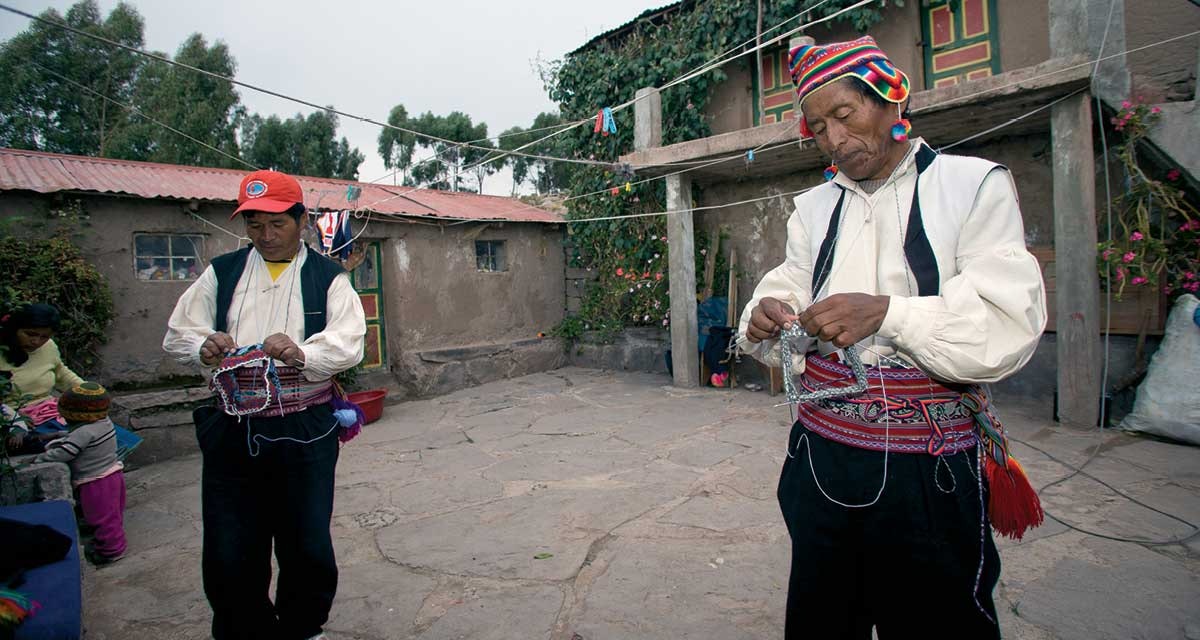
Faustino Quispe Cruz’s brother-in-law Gonzolo Yucra Huatta and a friend; both men are knitting. Taquile Island, Peru. 2010.
Methods and Motifs
The men of Taquile use the method introduced by the Spanish in the fifteenth century: knitting in the round with five needles, working from the wrong side of the fabric, placing yarns around their neck to maintain tension and keep the colors from tangling. The work is improbably fine: 22 stitches to the inch (about 9 stitches per cm) is not unusual. This allows for extremely detailed motifs, which are abundant in Taquile knitting. Birds, butterflies, cattle and sheep, flowers, and the distinctive six-segment circle that represents the island’s six districts all find their way into the typical red borders of the traditional caps.
In older times, men’s caps generally had a wide red patterned border and a plain white crown. When they married, they knit caps that were solid red with patterning all the way to the tops. Today, color-stranding an entire cap is just too time consuming for men who must also work in the fields and tend their flocks all day. Patterns have also been simplified: many motifs are reduced to perhaps five rows, which limits the amount of detail that is possible. And although older caps were knitted with local sheep’s wool, today’s are more likely to have been made with the readily available fine acrylic yarns.
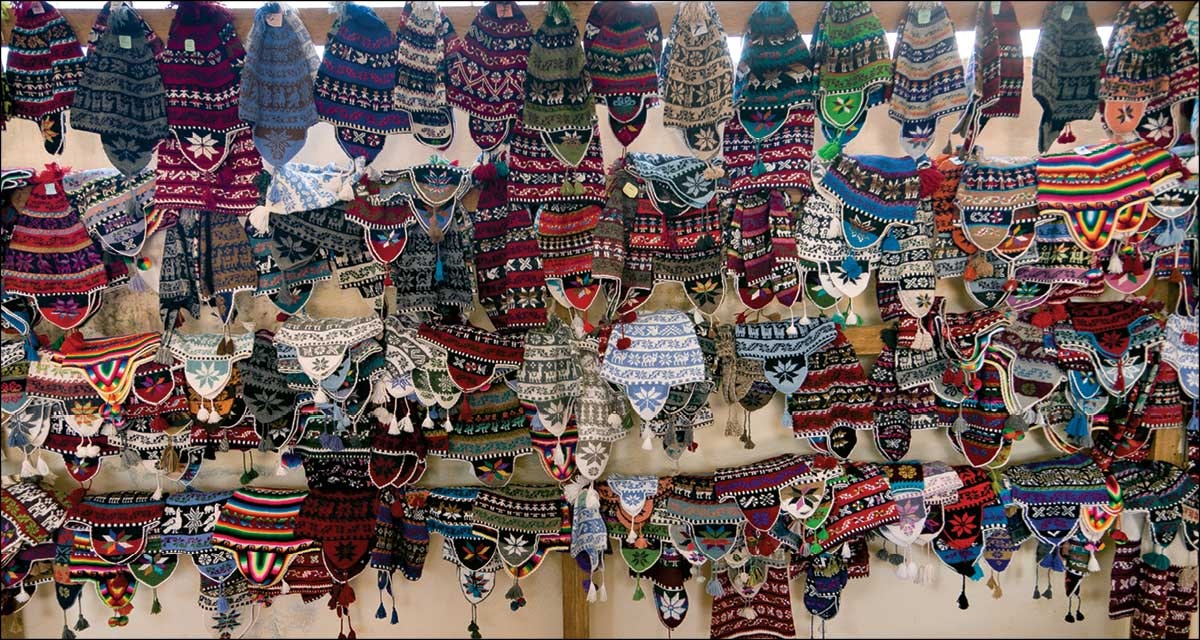
Knitted caps for sale in the craft cooperative in Taquile. Taquile Island, Peru. 2010.
One Family’s Tradition
By the time Taquile resident Faustino Quispe Cruz was eight years old, he had begun to learn to weave on a treadle loom from his father and had started on his journey as a master knitter. At fourteen, he had completed seven caps, each showing more and more skill, creativity, and experimentation. At twenty, he had a wife and baby boy, and the pressure of producing cloth for his family’s clothing compelled simpler patterns in his knitting, but still he continued to knit. Today, he’s a grandfather, his son knits in the family tradition, and his four-year-old grandson sports a traditional cap with pride.
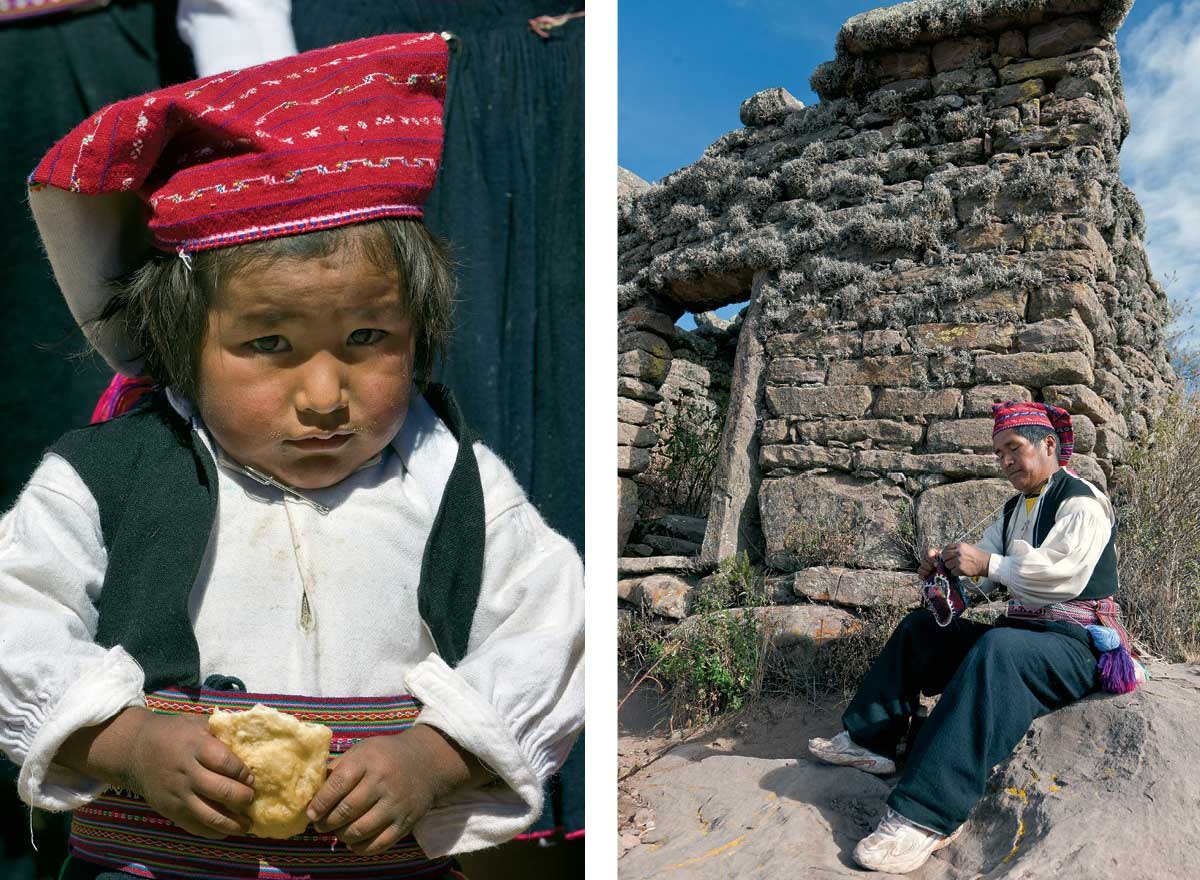
Left: Faustino Quispe Cruz’s four-year-old grandson, wearing the traditional knitted cap. Taquile Island, Peru. 2010. Right: A Taquile knitter at Inca ruins. Taquile Island, Peru. 2010.
Faustino and his son are among the men of Taquile who contribute work to the island’s craft cooperative, which has a store in the main square. Members of the community run the cooperative, regulating pricing and the number of pieces that any member may display at any given time. Tourist boats arrive at the island for short visits daily, and some hardy travelers arrange overnight homestays with local families. A visit to the cooperative is requisite, but still supply far exceeds demand. Because Taquile has no airport, no postal service, and no Internet access, importing materials and exporting goods haven’t been feasible. Yet the women continue to spin and weave, and the men to weave and knit, just as they have for centuries. Change comes slowly, and the knitting endures.
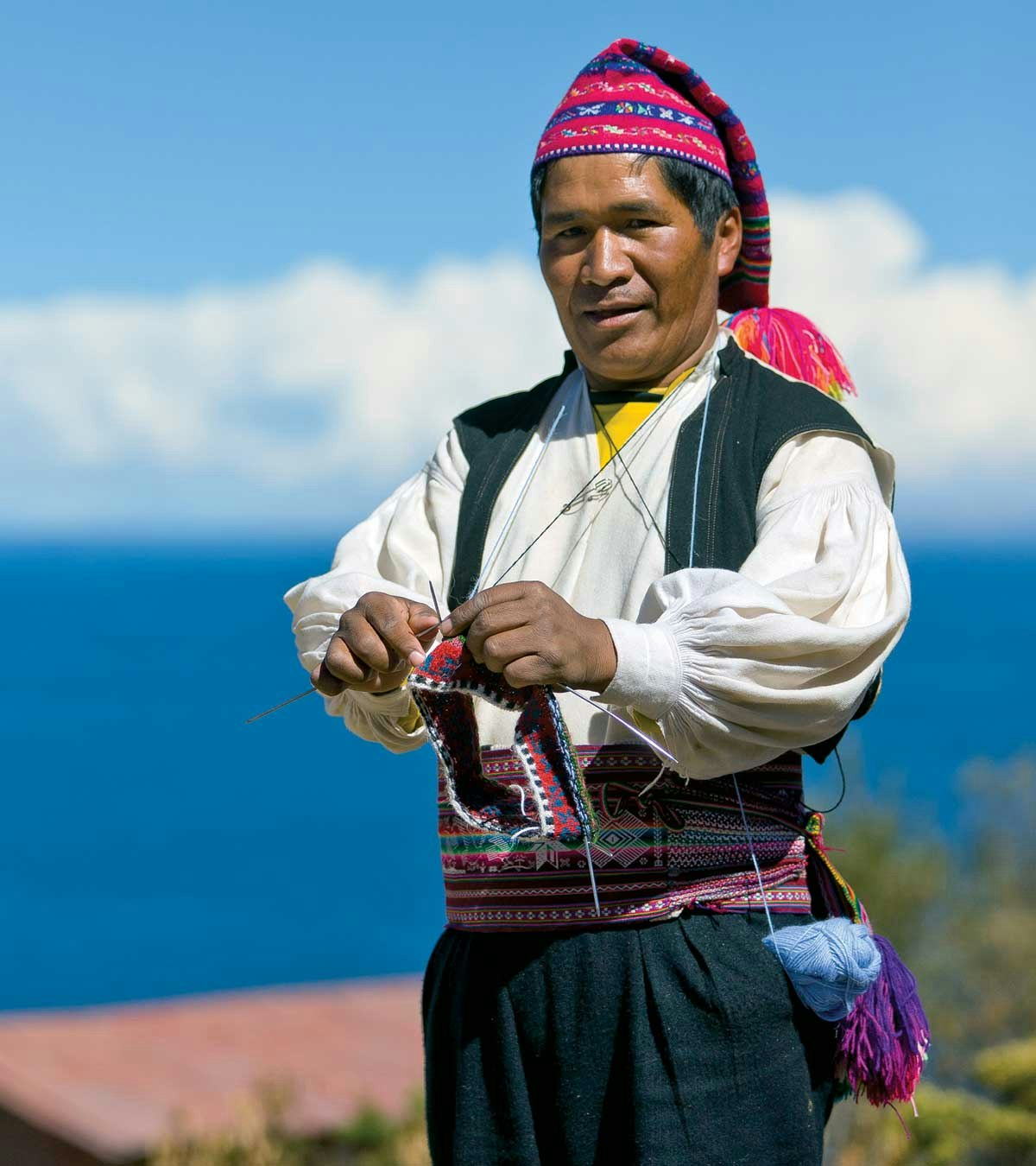
Faustino Quispe Cruz knitting with Lake Titicaca in the background. Taquile Island, Peru. 2010.
Linda Ligon is a cofounder of Long Thread Media.
Further Reading
Frame, Mary. A Family Affair: Making Cloth in Taquile, Peru. Museum Note No. 26. Vancouver: University of British Columbia Museum of Anthropology, 1989. (This monograph records the lives and textile practices of Faustino Quispe Cruz’s family: his father and mother, siblings, and their spouses.)
This article was originally published in the January/February 2012 issue of PieceWork.

